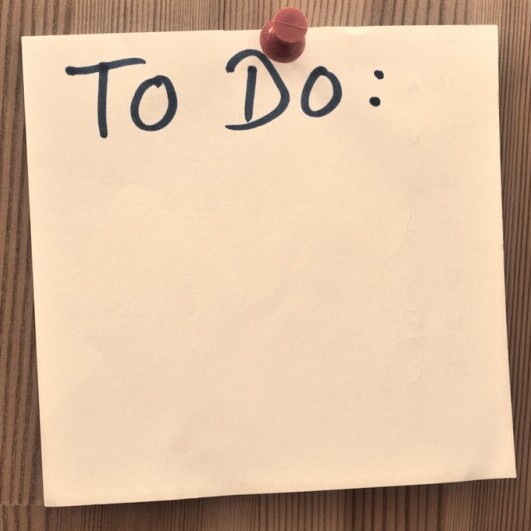Feeling overwhelmed is a common experience nowadays. I have personally experienced the feeling of being completely overwhelmed, whether juggling deadlines, family responsibilities, or unexpected challenges.
As a psychologist, I have worked with many individuals facing the same struggles, and I know how paralyzing it can feel. Research in psychology1 shows that chronic stress can negatively impact both mental and physical health, leading to anxiety, burnout, and even weakened immune function. The good news is that there are effective coping strategies to help you regain a sense of control and balance. Here are five evidence-based approaches to manage overwhelm and restore clarity.
1. How to Recognize Overwhelm and Break Down Tasks to Reduce Stress

Feeling overwhelmed is not just about being busy. It manifests as emotional, physical, and cognitive signals, such as racing thoughts, difficulty focusing, irritability, and muscle tension. Overwhelm often occurs when trying to handle too much at once. Recognizing these signs early2 is the first step in addressing the situation.
How to Apply This Strategy:
- Identify the symptoms of overwhelm, such as mental fog, forgetfulness, or feeling constantly “on edge.”
- Make a list of everything you need to do and categorize tasks by urgency and importance.
- Use the Eisenhower Matrix, a simple decision-making tool that helps you sort tasks into four categories:
- Urgent and important,
- Important but not urgent,
- Urgent but not important,
- and neither urgent nor important.
- Break down overwhelming projects into smaller, manageable steps and focus on one at a time.
- Try brain dumping, where you write down all thoughts, concerns, and to-dos to clear mental clutter.
Example: If an overwhelming project is due soon, break it down into clear steps, such as gathering materials, outlining ideas, drafting, and revising. Checking off each step builds progress and reduces the sense of being stuck.
2. Best Breathing Techniques for Stress Relief and Anxiety Control

When overwhelmed, the body’s fight-or-flight response3 activates, increasing heart rate and stress hormones. Grounding techniques and deep breathing can counteract this response, helping you feel calmer and more focused.
How to Apply This Strategy:
- Try the 5-4-3-2-1 grounding technique: Identify five things you can see, four things you can touch, three things you can hear, two things you can smell, and one thing you can taste. This sensory exercise can shift your focus away from stressors.
- Use the 4-7-8 breathing technique: Inhale for 4 seconds, hold for 7 seconds, and exhale for 8 seconds. This activates the parasympathetic nervous system4, reducing stress.
- Try box breathing, where you inhale, hold, exhale, and hold each for a count of four. This method is used by athletes to regain control under pressure.
- Engage in progressive muscle relaxation (PMR)5 by tensing and relaxing different muscle groups to release physical tension.
Example: If you feel overwhelmed before a big presentation, take five minutes to practice deep breathing. This helps calm your nervous system and improve concentration.
3. How to Set Boundaries Without Feeling Guilty
Overcommitment is a major cause of overwhelm. Many people struggle to say no because they fear disappointing others or missing opportunities. However, research6 shows that setting boundaries is essential for mental well-being and prevents burnout.
How to Apply This Strategy:
- Recognize your limits and assess whether taking on new responsibilities aligns with your capacity and well-being.
- Practice assertive communication by saying, “I appreciate the opportunity, but I can’t commit to this right now.”
- Set digital boundaries by turning off non-essential notifications and limiting social media use.
- Schedule buffer time in your day to avoid back-to-back commitments, allowing for rest and decompression.
Example: If a colleague asks for help with a project when you are already stretched thin, politely decline and suggest an alternative time when you have more availability.
4. Engage in Physical Activity and Quick Resets
Exercise is one of the most effective stress relievers. Physical movement releases endorphins7, which act as natural mood boosters and reduce stress levels. Additionally, exercise helps regulate cortisol8, the body’s primary stress hormone.
How to Apply This Strategy:
- Engage in low-impact activities such as walking, yoga, or stretching, which promote relaxation without requiring intense effort.
- Use exercise as a break: Even 10-minute movement sessions9 can refresh your mind and increase productivity.
- Incorporate mind-body practices like tai chi or qigong, which emphasize slow movements and deep breathing to foster a sense of calm.
- Step outside for a quick mental reset or listen to calming music to pause and refresh your thoughts.
Example: When feeling overwhelmed at work, take a 10-minute walk outside. Studies10 show that walking in nature reduces cortisol levels and improves mental clarity.
5. How to Reframe Negative Thoughts and Manage Stress Effectively

Social support plays a crucial role in buffering stress. Research11 indicates that having strong social connections improves emotional resilience and reduces feelings of loneliness and overwhelm. Additionally, reframing negative thoughts can significantly shift perspective and lighten emotional burdens.
How to Apply This Strategy:
- Talk to a trusted friend, family member, or mentor about what is causing stress. Verbalizing concerns can provide clarity and emotional relief.
- Join a support group or community that shares similar experiences, providing a sense of belonging and encouragement.
- Reframe negative self-talk: Instead of saying, “I can’t handle this,” try, “I can take it one step at a time.”
- If the overwhelm persists, consider seeking professional help. Therapists and counselors can offer coping strategies tailored to your specific needs.
Example: If juggling work and personal responsibilities feels too much, reach out to a friend for a coffee chat. Expressing your thoughts and receiving encouragement can help shift your perspective.
Bringing It All Together
Overwhelm is a natural response to life’s pressures, but it doesn’t have to control your well-being. By implementing these five coping strategies — recognizing symptoms early, practicing mindfulness, setting boundaries, engaging in movement, and seeking support — you can create a toolkit for managing stress effectively.
Key Takeaways:
- Recognize overwhelm early by identifying emotional, cognitive, and physical symptoms.
- Use grounding techniques like deep breathing and the 5-4-3-2-1 method to stay present.
- Set healthy boundaries to protect your time, energy, and mental well-being.
- Incorporate quick resets through physical movement, nature exposure, or creative outlets.
- Seek social support and reframe negative thinking to build resilience.
Small, intentional changes can make a significant difference in managing overwhelm and improving overall well-being.
I hope these strategies help you feel more in control and less overwhelmed. If you found this article helpful, share it with someone who might need it. Do you have any personal tips or experiences to add? Drop them in the comments. I would love to hear from you! And if you are looking for more personalized support, don’t hesitate to seek professional guidance from a therapist or counselor.
FAQ:
Q1. How long does it take to feel less overwhelmed using these strategies?
A: It varies. Some techniques, like deep breathing, provide immediate relief, while others, such as boundary-setting and mindset shifts, may take a few weeks to show noticeable improvement.
Q2. What if these strategies don’t work for me?
A: If you are still feeling overwhelmed after trying these methods consistently, seeking support from a mental health professional might be helpful. Therapy or coaching can offer personalized strategies tailored to your situation.
Q3. Can I use these strategies for work-related stress?
A: Absolutely! Many methods, like breaking tasks into steps, setting boundaries, and using quick resets, are particularly effective for workplace stress management.
Q4. What is the best strategy if I am immediately overwhelmed?
A: Try the 5-4-3-2-1 grounding technique or deep breathing (4-7-8 method) to quickly calm your nervous system and regain focus.
Q5. How can I make these strategies a daily habit?
A: Start small! Choose one technique to practice daily and set reminders (e.g., a phone alarm for deep breathing or journaling at night). Over time, these habits become something natural.
About the Author
Carla Picolli is a psychologist, author, and mental health advocate. With over two decades of experience in mental health and wellness, Carla helps individuals build sustainable habits for a healthier, happier life.
References:
- https://pubmed.ncbi.nlm.nih.gov/17615391/
- https://doi.org/10.1207/s15516709cog1202_4
- https://health.clevelandclinic.org/what-happens-to-your-body-during-the-fight-or-flight-response
- https://www.semel.ucla.edu/sites/default/files/pdf/brown_and_gerbarg_-_healing_power_of_the_breath.pdf
- https://www.healthline.com/health/progressive-muscle-relaxation
- https://pmc.ncbi.nlm.nih.gov/articles/PMC4911781/
- https://pubmed.ncbi.nlm.nih.gov/11148895/
- https://pubmed.ncbi.nlm.nih.gov/18787373/
- https://www.apa.org/pubs/journals/releases/xlm-a0036577.pdf
- https://pubmed.ncbi.nlm.nih.gov/19121124/
- https://pubmed.ncbi.nlm.nih.gov/20668659/


I enjoyed reading this. Feeling overwhelmed is something we all experience, but having the right coping strategies makes a huge difference. Breaking tasks into smaller steps, practicing deep breathing, and setting boundaries can help regain balance. A short walk or reaching out for support can also work wonders. Prioritizing self-care isn’t selfish, it’s necessary. Great insights in this article!
I’m glad you enjoyed the article, Randi! Thank you for your time and for sharing such valuable insights!
Your article offers practical and evidence-based strategies for managing feelings of overwhelm. I appreciate the detailed explanations and actionable steps provided for each technique. The emphasis on recognizing early signs of stress and implementing grounding techniques, such as the 5-4-3-2-1 method, is particularly helpful. Additionally, the guidance on setting boundaries without guilt resonates with many who struggle to balance commitments. Could you share more about how to effectively communicate these boundaries in a professional setting, especially when dealing with demanding workloads?
Thank you for your feedback, Hanna! I’m glad you found the strategies helpful. Setting boundaries professionally can be challenging, but clear, confident communication is key. When dealing with demanding workloads, try using assertive and respectful language, such as: “I want to give this task my full attention, but I need more time to ensure quality results. Can we discuss a realistic deadline?” or “I appreciate the opportunity, but I’m currently at capacity. Can we reassess priorities?” Framing boundaries to maintain productivity and prevent burnout makes them more easily accepted.
This post provides an excellent breakdown of practical strategies for managing stress and overwhelm. The emphasis on recognizing early signs of stress, breaking tasks into manageable steps, and utilizing evidence-based techniques like deep breathing and boundary-setting is particularly helpful. I appreciate the actionable approach, especially the use of the Eisenhower Matrix for prioritization—it’s a game-changer for those feeling buried under responsibilities.
Additionally, the focus on movement, social support, and reframing negative thoughts highlights a well-rounded approach to mental well-being. It’s reassuring to see a blend of immediate relief techniques, such as grounding exercises, alongside long-term strategies for resilience.
One key takeaway for me is the importance of small, intentional changes. Implementing just one or two of these methods can significantly improve our ability to cope with stress. Thank you for sharing these insights!
For those who have tried these strategies, which one has made the biggest difference in your life? Let’s keep the conversation going!
Thank you for your thoughtful response, Andrejs! I’m glad you found the breakdown of strategies helpful. Small, intentional changes indeed are key, and starting with just one or two methods can create lasting improvements in well-being. What helps me cope with the stress is cycling, feeling the fresh air on my face, and doing deep breathing exercises before my meetings.
Wow, this article really hits home! Feeling overwhelmed can be so paralyzing, but I love how you break it down into simple, actionable steps. The 5-4-3-2-1 grounding technique is a game-changer—I’ve used it before, and it truly helps bring me back to the present moment. Also, setting boundaries without guilt is something I’m still working on. Thanks for these reminders! Has anyone else tried these strategies? Which ones work best for you?
I’m glad this article resonated with you, Naresh! You’re not alone in working on setting boundaries without guilt. It’s a skill that takes practice. Still, each step toward prioritizing your well-being is a win! As I said to Andre in the other comment, what helps me cope with the stress is cycling and doing deep breathing exercises before my meetings. I’d love to hear from others, too.